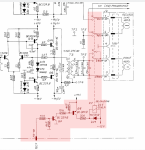Hi
Earlier I had a problem of unable to record at 15ips with this recorder. I rectified the problem with the guidance from the forum. The problem was the bias setting was at zero for 15ips. After that it was recording OK all this while until recently. Now when I record, both channel start recording OK, but after a few minutes, the left channel stops recording totally. While recording, I usually switch to "repro" to monitor the present recording. Both channels are reproducing the current recording at the beginning but after a few minutes the left channel is suddenly playing back the previous recording( i.e it is not erasing the previous material and also not recording the present material). The right channel is doing fine. Can someone familiar with this problem give me some guidance.
Thanks
Carlos
Earlier I had a problem of unable to record at 15ips with this recorder. I rectified the problem with the guidance from the forum. The problem was the bias setting was at zero for 15ips. After that it was recording OK all this while until recently. Now when I record, both channel start recording OK, but after a few minutes, the left channel stops recording totally. While recording, I usually switch to "repro" to monitor the present recording. Both channels are reproducing the current recording at the beginning but after a few minutes the left channel is suddenly playing back the previous recording( i.e it is not erasing the previous material and also not recording the present material). The right channel is doing fine. Can someone familiar with this problem give me some guidance.
Thanks
Carlos


